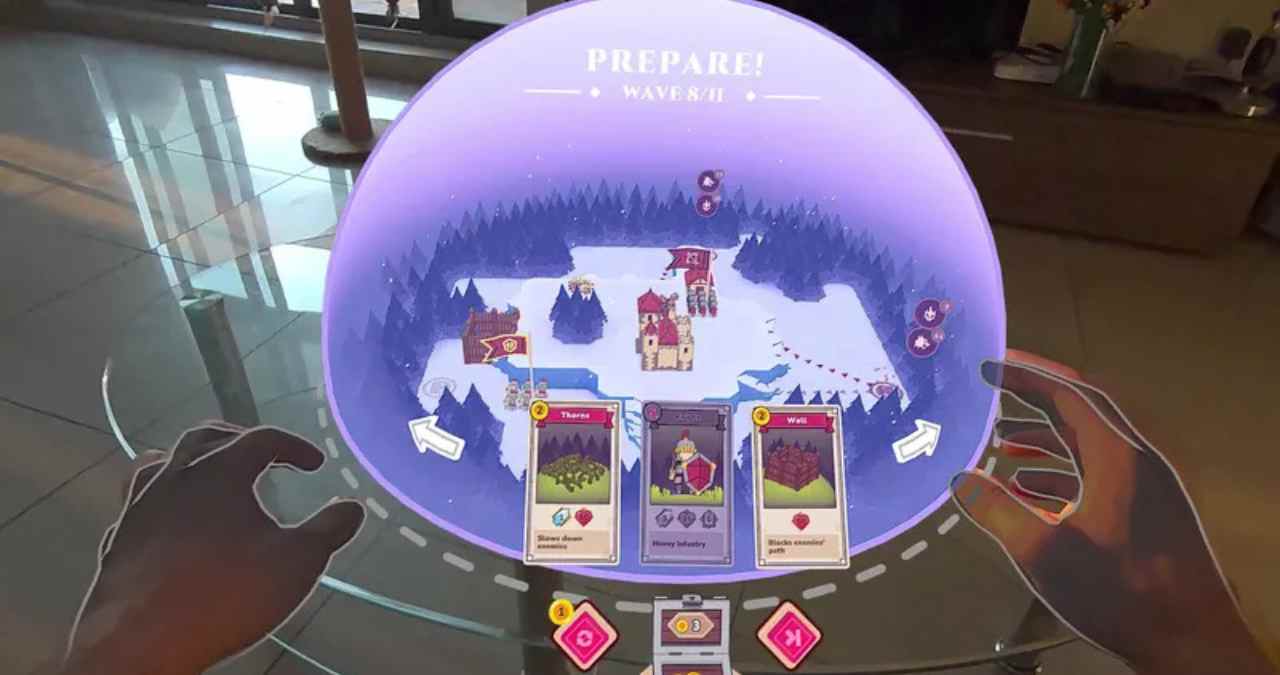VR strategy games usually fall into one of two camps: god-view titles where you tower above the battlefield, or first-person simulations that play more like immersive board games. Banners & Bastions doesn’t sit neatly in either category. Instead, it experiments with mixed reality, projecting a tactical arena directly onto real-world surfaces.
The result is a game that feels closer to a digital miniatures skirmish than a traditional VR experience. Rather than dropping you into a fully virtual world, it overlays the action onto your actual table, desk, or floor, shifting the focus from immersion to integration.
Gameplay Structure
At its core, Banners & Bastions is a competitive battler where two sides deploy units and maneuver them across a grid-based arena. The mechanics pull from traditional tabletop strategy, with placement and timing often mattering more than raw stats. Units auto-attack once positioned, so success leans heavily on tactical foresight.
The format borrows from autobattlers in pacing but ties it to a more grounded, spatial setup. Seeing units clash directly on your living room table changes the feel of the match, turning familiar spaces into dynamic playfields.
Mixed Reality Design
The standout element is the MR layer. Players can anchor the battlefield to any flat surface, creating the sense of a holographic war table. This choice makes the experience feel distinct from fully virtual battlers, where environments are constructed from scratch.
The design also makes spectating more natural. Friends or bystanders can glance at the headset display and recognize the physical context of the match. That blend of physical and digital presence is where MR strategy games may carve out their own niche.
Visual Style and Atmosphere
Banners & Bastions goes for a stylized medieval-fantasy look, with bright units and bold spell effects. The presentation is clear rather than hyper-detailed, which suits its tabletop framing. Instead of losing units in noisy visuals, the design emphasizes readability from a top-down view.
The animations are light but deliberate, giving just enough feedback without overwhelming the MR layer. In practice, it feels closer to animated miniatures than a full cinematic battle.
Virtual Reality Explorer & Game Reviewer
Always the first to plug in. VRSCOUT dives head-first into the most immersive VR worlds, analyzing mechanics, comfort, innovation, and that elusive “presence” factor. If he says it’s worth it, it probably is.




